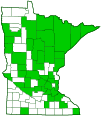Willow pinecone gall midge
(Rabdophaga strobiloides)
Conservation • Description • Habitat • Ecology • Distribution • Taxonomy
Conservation Status |
|||
| IUCN Red List | not listed |
||
| NatureServe | not listed |
||
| Minnesota | not listed |
||
Description
Willow pinecone gall midgeis a small fly. Adults are about 3 ⁄16″ in length.
It is most often identified by the conspicuous and distinctive gall that houses the growing larva. The gall appears at the end of a willow stem. It consists of numerous, stunted, overlapping, loosely appressed, scale-like leaves. In the summer it is green, more or less globular, and densely covered with long, white, matted and tangled, woolly hairs. In the fall the cone turns brown and the shape resembles a pine cone.
Size
About 3 ⁄16″ long
Similar Species
This is the only midge that forms pinecone-shaped galls at the tips of willow stems.
Habitat
Ecology
Season
One generation per year in Minnesota
Behavior
Life Cycle
Adults emerge on warm days in late April or May. The female lays eggs singly on the leaves and stems near the stem tips of a host plant. The egg hatches in early May and the larva crawls to the tip of the stem. It then burrows into the soft tissue at the base of the tip of the shoot. It emits a chemical that causes the shoot tip to develop abnormally. The shoot ceases to elongate and instead produces numerous overlapping leaves that envelope the larva. The loosely overlapping leaves allow up to 31 other species of insects to deposit their eggs, including beetles, moths, sawflies, cypnid wasps, midges, and grasshoppers.
The larva pupates inside the gall and overwinters as a pupa. It produces high levels of glycerin which allows it to survive even harsh winters. In the spring a young midge emerges.
Larva Food/Hosts
Many species of willow
Adult Food
Distribution |
||
|
Sources |
|
| 10/5/2025 | ||
Occurrence |
||
Common |
||
Taxonomy
Order
Suborder
Nematocera
Infraorder
Bibionomorpha (gnats and allies)
Superfamily
Sciaroidea (fungus gnats and gall midges)
Family
Cecidomyiidae (gall and forest midges)
Subfamily
Cecidomyiinae (gall midges)
Supertribe
Lasiopteridi
Tribe
Dasineurini
Genus
Rabdophaga (willow gall midges)
Subordinate Taxa
Synonyms
Cecidomyia salicisstrobiloides
Cecidomyia strobiloides
Rabdophaga strobilina
Common Names
willow pinecone gall midge
Glossary
Midge
A small fly, somewhat resembling a mosquito, in one of several families in the suborder Nematocera.
Visitor Photos
Share your photo of this insect.
This button not working for you?
Simply email us at info@MinnesotaSeasons.com.
Attach one or more photos and, if you like, a caption.
|
||
MinnesotaSeasons.com Photos
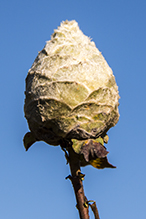 |
||
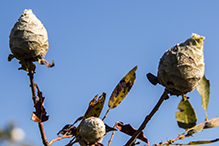 |
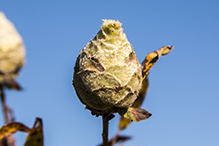 |
|
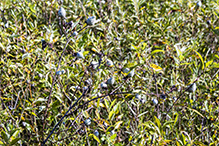 |
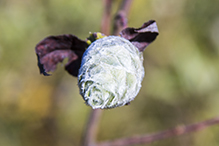 |

Slideshows
Willow Pinecone Gall Midge (Rabdophaga strobiloides)
Andree Reno Sanborn

Visitor Videos
Share your video of this insect.
This button not working for you?
Simply email us at info@MinnesotaSeasons.com.
Attach a video, a YouTube link, or a cloud storage link.
Other Videos
Willow Pine Cone Gall ,Griffith Indiana
Christopher Stokes
Willow Pine Cone Gall ,Griffith Indiana
Christopher Stokes

Visitor Sightings
Report a sighting of this insect.
This button not working for you?
Simply email us at info@MinnesotaSeasons.com.
Be sure to include a location.
Heather Nybo
9/23/2018
Location: New Prague, MN (Scott County)
Minnesota Seasons Sightings
Avon Hills Forest SNA, North Unit
Badoura Jack Pine Woodland SNA
Hill River State Forest
John Peter Hoffman Spring Brook Valley WMA
Margherita Preserve-Audubon Prairie
Northern Tallgrass Prairie NWR, Rengstorf Unit
Northern Tallgrass Prairie NWR, Spieker Unit

